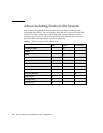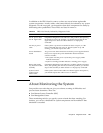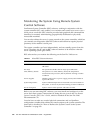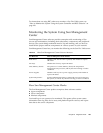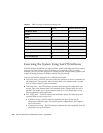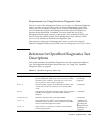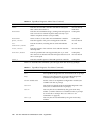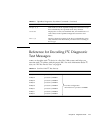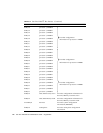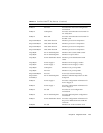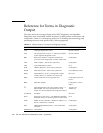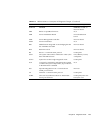
108 Sun Fire V490 Server Administration Guide • August 2004
SunVTS Software and Security
During SunVTS software installation, you must choose between Basic or Sun
Enterprise Authentication Mechanism (SEAM) security. Basic security uses a local
security file in the SunVTS installation directory to limit the users, groups, and hosts
permitted to use SunVTS software. SEAM security is based on Kerberos—the
standard network authentication protocol—and provides secure user authentication,
data integrity, and privacy for transactions over networks.
If your site uses SEAM security, you must have the SEAM client and server software
installed in your networked environment and configured properly in both Solaris
and SunVTS software. If your site does not use SEAM security, do not choose the
SEAM option during SunVTS software installation.
If you enable the wrong security scheme during installation, or if you improperly
configure the security scheme you choose, you may find yourself unable to run
SunVTS tests. For more information, see the SunVTS User’s Guide and the
instructions accompanying the SEAM software.
Exercising the System Using Hardware Diagnostic
Suite
The Sun Management Center product features an optional Hardware Diagnostic
Suite, which you can purchase as an add-on. The Hardware Diagnostic Suite is
designed to exercise a production system by running tests sequentially.
Sequential testing means the Hardware Diagnostic Suite has a low impact on the
system. Unlike SunVTS, which stresses a system by consuming its resources with
many parallel tests (see “Exercising the System Using SunVTS Software” on
page 106), the Hardware Diagnostic Suite lets the server run other applications while
testing proceeds.
When to Run Hardware Diagnostic Suite
The best use of the Hardware Diagnostic Suite is to disclose a suspected or
intermittent problem with a noncritical part on an otherwise functioning machine.
Examples might include questionable disk drives or memory modules on a machine
that has ample or redundant disk and memory resources.
In cases like these, the Hardware Diagnostic Suite runs unobtrusively until it
identifies the source of the problem. The machine under test can be kept in
production mode until and unless it must be shut down for repair. If the faulty part
is hot-pluggable or hot-swappable, the entire diagnose-and-repair cycle can be
completed with minimal impact to system users.



